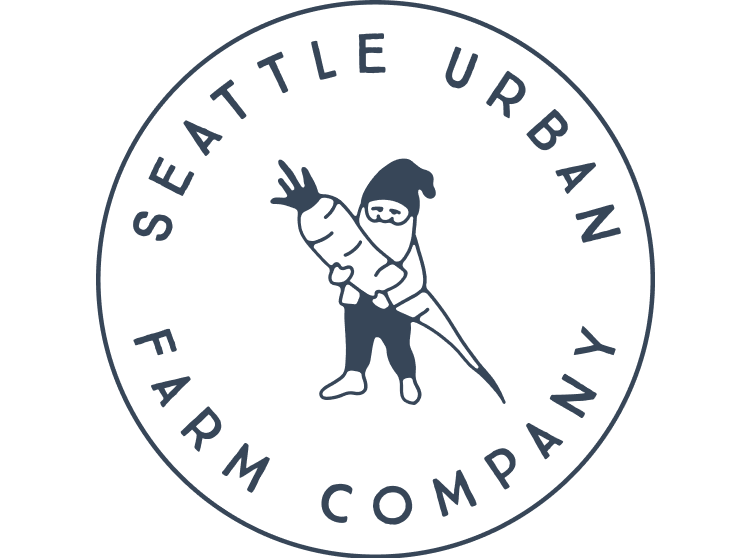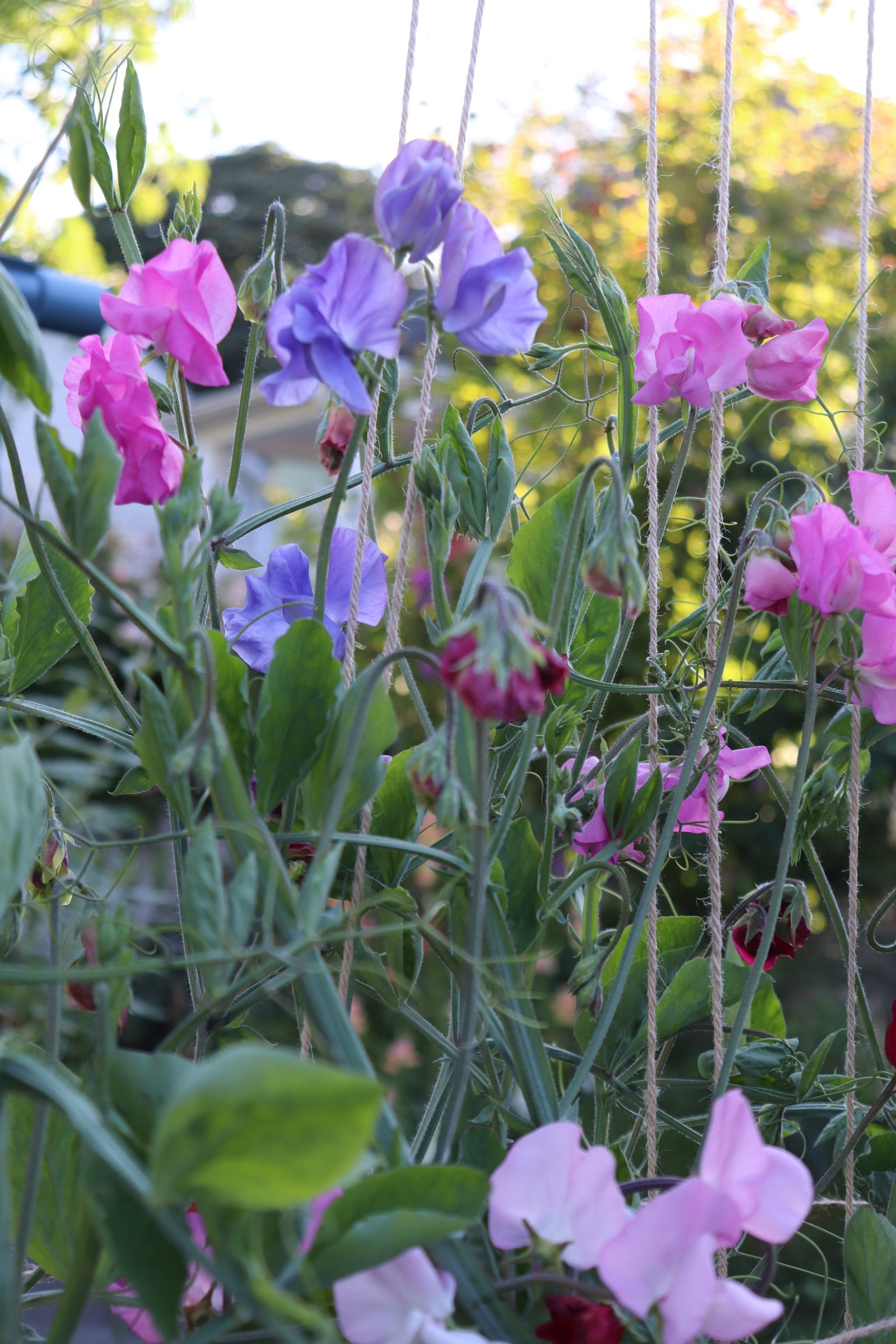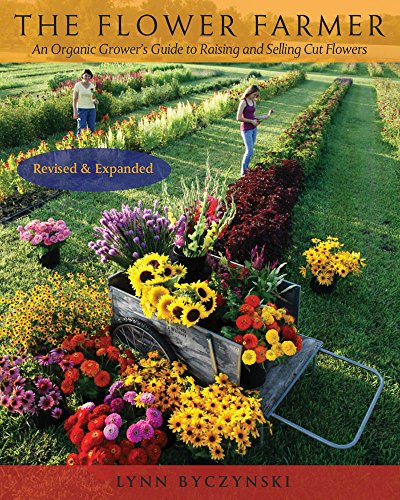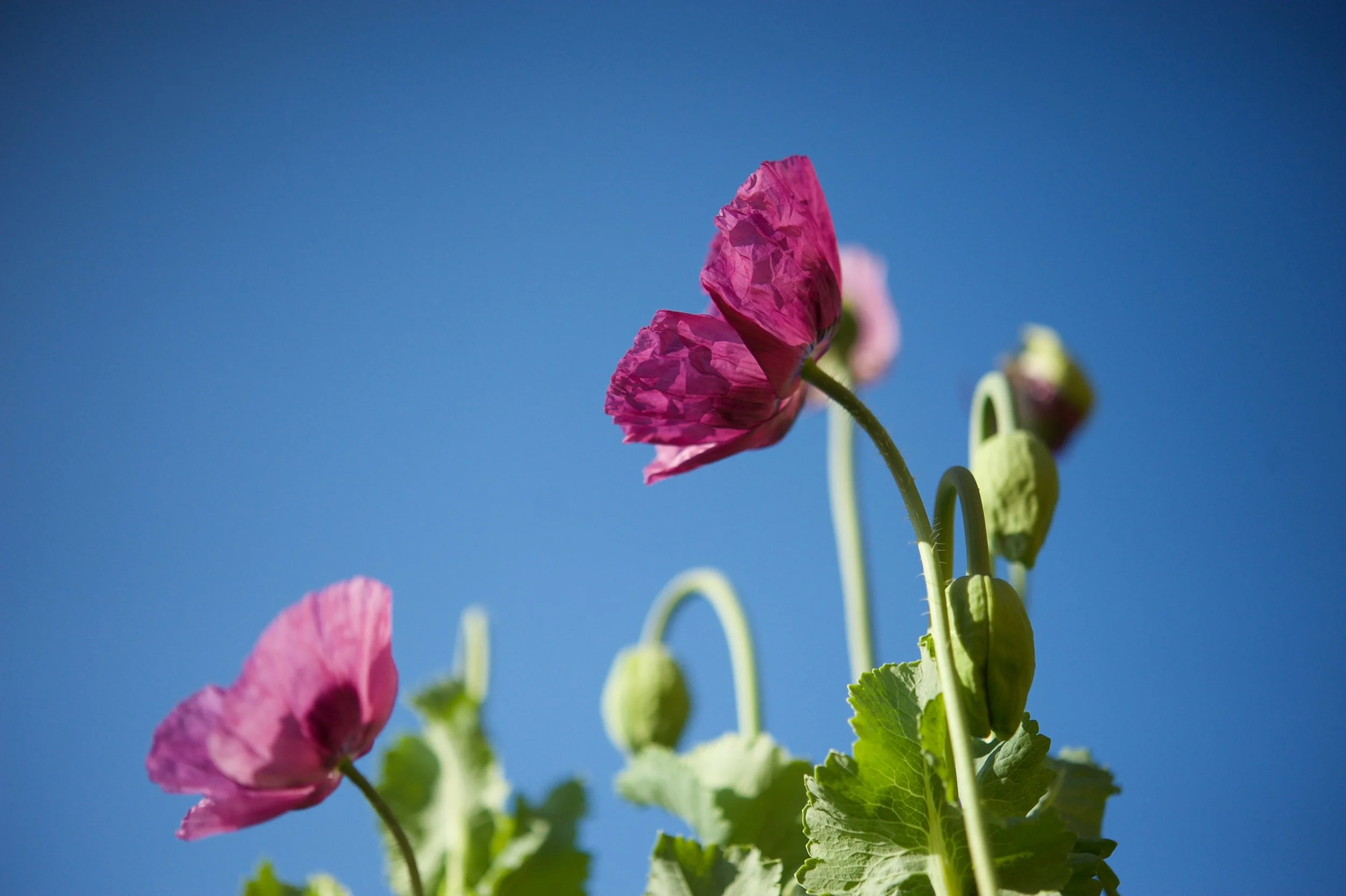By late winter I’m more than ready do start dreaming up a plan for my summer cutting garden. Seed catalogues spark my imagination with romantic descriptions and colorful images of summer and provide a welcome contrast to the grey winter days. Growing a cutting garden can be easy and even a small flower garden can be beautiful, and can provide a very important resource for your vegetable garden. Flowers attract pollinating and other beneficial insects to the garden, so by planting an array of flowers in the yard you are contributing to the biological diversity of your neighborhood. Check out this link to more information about flowers and their relationship to beneficial insects: Beneficial flowers link
Lets take a look at some of our favorite and most reliable annual flowers for cutting:
Cosmos
I absolutely love a stand of tall, dense cosmos, but admittedly, they can start to get a little unwieldy during the late summer months. If you have lots of room, I say go for it and grow the tall 4-footers. If you are tight on space, the short guys (20-26”) can still provide you with an abundance of cut flowers without taking over your entire garden.
As a cut flower: Cosmos, alone can make a cheery or sculptural bouquet. Mix them with other flowers, such as yarrow and nigella, and to create a rustic summertime bouquet. Harvest when petals are just beginning to open.
When and how to seed: Cosmos can be direct seeded mid-April through May.
Varieties we recommend: Sonata Knee-High Mix (shorter 30-40 inch plants), Double Click, Dancing Petticoats, Little Ladybirds (a new-to-us favorite!!!), .
Double Click Mix cosmos
Vierling Dill
Dill
Traditionally grown for it’s flavorful, foliage and seed heads, dill makes an amazing cut flower. The umbelliferous head provides a shape and texture that isn’t found as often among annual flowers.
As a cut flower: Dill last for up to ten days in a vase with water.
When and how to seed: Dill tends to germinate more consistently once the soil has had a chance to warm up a bit. Direct seed dill in late spring or early summer.
Varieties we recommend: Mammoth, Vierling
Marigolds
Orange and yellow marigolds in a container with tomatoes growing vertically on a Dusty Blue Freyr trellis - photo curtesy of Grow Girl Seattle
I have been growing marigolds for years and have always appreciated them for their powerfully fresh fragrance and organic pest control properties. But despite marigolds obvious virtues, I just wasn’t that inspired to grow them. A year or two ago I started to notice marigolds bud phase and everything changed. The buds are a succulent green, just thin enough for some of the yellow and orange tones to show through. The bud shapes vary, but can be reminiscent of a poppy seed pod.
As a cut flower: Not all marigold varieties provide strong, tall, spear-like stems with robust buds and flowers. Be sure you choose one that gets tall and has sturdy stems. Once cut, they easily last 10 days in water.
When and how to seed: Marigolds transplant well, so to get a jump on the season and ensure we have plenty of healthy baby plants, we seed marigolds in plug trays about 4 weeks before last frost. They can also be direct seeded into the garden after last frost. If direct seeding, thin plants to 8-20 inches apart. Deadhead regularly to encourage season-long color.
Varieties we recommend: Giant Orange, Giant Yellow, Signet Fire (fragrant shorter variety that makes a wonderful filler)
Nasturtiums
When it comes to Nasturtiums, Seattle Urban Farm Co seems to be a team divided. We have one camp who loves their simple, bright, edible flowers and playful, trailing aphid-attracting foliage. The other camp is of the belief that instead of distracting the inevitable summer aphids away from your vegetables, nasturtiums actually attract aphids to a garden in the first place; and although the aphids may initially congregate on the nasturtium plant, they will eventually spread to the rest of the garden. The jury is still out.
As a cut flower: Both the flower and foliage make good cut flowers and last a long time after cut. For me, personally, the leaf of the nasturtium is a unique gem that adds a bold texture to any bouquet.
When and how to seed: Nasturtiums should be direct seeded as early as 2 weeks before the last frost. We seed them from late-April through late-June. Sow in rows 10-12 inches apart at a rate of about 3 seeds per inch. Thin to 1 plants per foot.
Varieties we recommend: Empress of India, Moonlight Climbing, Copper Sunset (gorgeous silky red. We’re loving this variety), Amazon Jewel (fun variegated foliage) - check out a collection of nasturtium varieties we love to grow here!
Nigella
Nigella are a low-maintenance flower gardener’s dream. They germinate well when direct-seeded, they bloom for long periods of time and their delicate fern-like foliage and exotic looking seed pods are just as lovely as the flower. If left in the ground long enough for the seed pods to dry out, nigella will reseed itself-so it’s up to you to decide if you want them in the same spot next year.
As cut flowers: The petals will last only a few days once cut, but the seed heads will be happy for weeks in a vase with water, or months when dried.
When and how to seed: Nigella plants are sensitive to root disturbance so they are happiest when seeded directly into garden beds. They take about 75 days from seed to flowers, so in the Pacific Northwest, they can be seeded from late-March through July. Sow in rows 10-12 inches apart at a rate of about 3 seeds per inch. Thin to 2 plants per foot.
Varieties we recommend: Love in the Mist, Delft Blue
Nasturtium foliage
Bouquet including: sweet peas, marigold buds, marigold foliage, snapdragons & zinnias
Snapdragons
Snapdragons’ stalks of brightly colored flowers are a must for any cut flower garden. They bloom for months and their flowers come in just about every shade, except true blue.
As a cut flower: Harvest when the bottom 3rd of the flowers are open. Their soft, puffy, spikes can easily hold their own in a simple snapdragon only bouquet, and also work well mixed with other flowers.
When and how to seed: Snapdragon seeds need light to germinate, so they cannot be covered with soil. They can be direct seeded into garden beds, but you will have less control over the germination conditions. The seeds may blow away or get cover by soil after a heavy rain. We recommend starting the seed in plug trays. Fill the plugs (or old egg cartons) with germination mix or potting soil and simply press the seed on the surface of the potting soil. Water using a watering can or hose end sprayer set to the “shower” mode. Once germinated, snapdragons are easy to grow! Transplant into the garden in early May.
Varieties we recommend: Madame Butterfly, Rocket Mix, and Animation Mix
Sunflower
Like almost the annual flowers listed here, sunflowers are versatile, making a great bouquet on their own, or complimenting other flowers in a bouquet.
As a cut flower: Once cut, sunflowers last up to 10 days in water.
When and how to seed: Sunflower seeds can be sown directly into the garden from early April through May. Sow 2 seeds per inch in rows at least 12 inches apart. Thin to 1 plant per foot.
Varieties we recommend: Sunflower seed can be really expensive so we save the seed from the sunflowers we grow each year. Unless you need a very specific head-size or height, we highly recommend you save your seed too!
Sweet Peas
Sweet pea flowers growing vertically on the Freyr trellis and hemp twine
Sweet peas are by far the most fragrant of this bunch. These bright, trailing flowers looks as lovely on the vine as they do in a vase on the windowsill. If you are growing sweet peas near your vegetable garden, avoid confusion by planted them far away from edible peas, as all parts of sweet peas are poisonous.
As a cut flower: Not all sweet peas make great cut flowers. The heirloom varieties often have the most striking color and scent, but their stems tend to be short and thin, making them harder to work with as a cut flower.
When and how to seed: Sweet peas can be direct seeded into garden in late winter or early spring. The plants prefer to grow in cooler conditions, so get them started early so they have plenty of time to mature before the heat of summer sets in. Soak seeds in water for 24 hours before seeding. Sow 1 seed per inch along a sturdy trellis. Sweet peas can reach up to 10’ in height.
Varieties we recommend: Spencer types, Royal wedding, Blue Celeste - check out a collection of sweet pea varieties we recommend here.
Sweet peas growing vertically up hemp twine on a Dusty Blue Freyr trellis:
The following gallery of sweet pea photos is from Grow Girl Seattle, who uses multiple Freyr trellises around her urban flower garden to support her tall and climbing flowers.
Zinnia
Zinnias are commonly called the ‘workhorse’ of a flower garden. They are available in all shapes and sizes from large dahlia-flowered to small button-shaped.
As a cut flower: I have become quite the purist when it comes to zinnias and I am now inclined to think that they are displayed best in zinnia-only bouquets. With that said, I do mix them into more dynamic bouquets (see below).
When and how to seed: We have found that zinnias grow best when direct-seeded. Sow 2 seeds per inch. Thin to about 3 plants per foot. Most zinnia plant spacing guides would say to thin them to 1 plant per foot, but as you cut the flowers, you are effectively thinning as you cut! For season long cutting, succession plant them every 2 weeks from April to the first week of May.
Varieties we recommend: Berry Basket, Raspberry Sorbet - check out a collection of zinnia varieties we recommend here.
Selection of Benary's Giants zinnia
Books and Resources on growing flowers that we love:
Garden bouquet featuring sweet peas, marigold buds and snapdragons



















